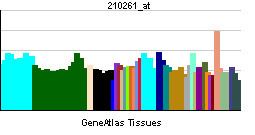Entrez 3776 | Ensembl ENSG00000082482 | |
 | ||
Aliases KCNK2, K2p2.1, TPKC1, TREK, TREK-1, TREK1, hTREK-1c, hTREK-1e, potassium two pore domain channel subfamily K member 2 External IDs MGI: 109366 HomoloGene: 7794 GeneCards: KCNK2 | ||
Potassium channel subfamily K member 2 is a protein that in humans is encoded by the KCNK2 gene.
This gene encodes K2P2.1, one of the members of the two-pore-domain background potassium channel protein family. This type of potassium channel is formed by two homodimers that create a channel that leaks potassium out of the cell to control resting membrane potential. The channel can be opened, however, by certain anesthetics, membrane stretching, intracellular acidosis, and heat. Three transcript variants encoding different isoforms have been found for this gene.
Function in neurons
Another name for this channel is TREK-1. TREK-1 is part of the subfamily of mechano-gated potassium channels that are present in mammalian neurons. They can be gated in both chemical and physical ways and can be opened via both physical stimuli and chemical stimuli. TREK-1 channels are found in a variety of tissues, but are particularly abundant in the brain and heart and are seen in various types of neurons. The C-terminal of TREK-1 channels plays a role in the mechanosensitivity of the channels.
In the neurons of the central nervous system, TREK-1 channels are important in physiological, pathophysiological, and pharmacological processes, including having a role in electrogenesis, ischemia, and anesthesia. TREK-1 has an important role in neuroprotection against epilepsy and brain and spinal cord ischemia and is being evaluated as a potential target for new developments of therapeutic agents for neurology and anesthesiology.
In the absence of a properly functioning cytoskeleton, TREK-1 channels can still open via mechanical gating. The cell membrane functions independently of the cytoskeleton and the thickness and curvature of the membrane is able to modulate the activity of the TREK-1 channels. The insertion of certain compounds into the membrane is thought to mediate the opening of TREK-1 by forming a curve in the membrane.
